
iPhone Touch Screen Not Working or Responding? Here's The Fix

From making calls to scrolling through social media, iPhones have become an essential part of our lives, and it can be quite inconvenient when its screen isn't functioning properly. iPhone touch screen not working can be discouraging, especially when you rely heavily on it for various activities.
Well, don't let such distress get you down; there are surefire ways to resolve the iPhone touch screen not working or responding issue and restore the functionality of your device.We'll explain why this issue happen and give you the steps to troubleshoot the issue.
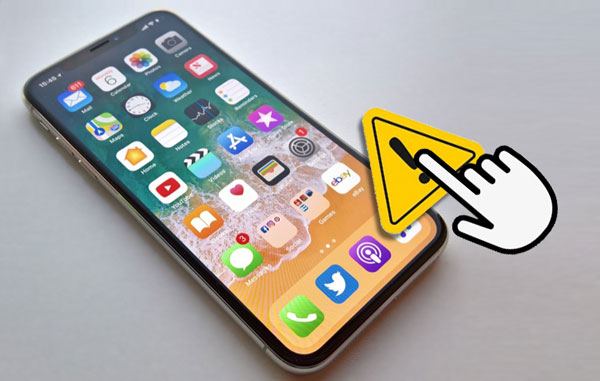
To understand how to fix the iPhone touch screen stopped working issue, we need to first identify the cause. Often, your iPhone's display may be either physically or software-wise impaired. Let's dive into the primary reasons an iPhone touchscreen may be unresponsive:
In this article, we will cover the potential solutions for this issue.
By now, you have likely thought of a few solutions based on the potential causes discussed above. To make it easier for you, here is an actionable list to help fix touchscreen problems quickly and effortlessly:
You now know the possible causes of the touchscreen not responding; it is logical to learn some of the effective resolutions. To make things simpler, how to fix iPhone/iPad Touch Screen not working problem?
If iPhone touch screen is not working properly, the first thing to do is force restart the device. It could be an effective solution. Whenever Apple users experience issues with their iPhones, the most logical step for them to take is to restart them. Switch off the iPhone and wait for a few seconds. Turn it on and check if the touch screen is responsive. Suppose it does not; try force restarting it. This should resolve any unresponsiveness issues on iPhone.
If your iPhone 7 or later's touch screen is not working, restart it by pressing the Volume down and Power buttons until you see the Apple logo. To restart your iPhone 6s and older models, firmly press the Home and Power buttons until the Apple logo shows.
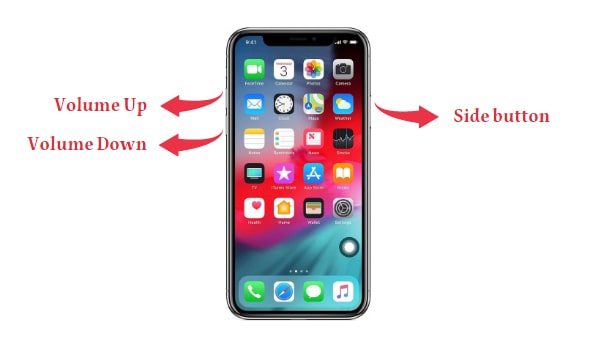
Issues with unresponsive touchscreens can also result from dirt or water getting on the screen. Also, if you have wet or dirty hands, you won't be able to use the touchscreen until they are dried and cleaned. So, clean the screen gently with a soft, dry cloth and ensure that any traces of water, sweat, oils, or dirt have been completely wiped off. Just get a soft cloth to gently remove any dirt, dust, or water droplets from the screen. To prevent touchscreen issues, be sure to do this regularly.
If the device is too hot, it may give you difficulty operating. For instance, the screen can fail to respond to touch. So, let it cool down first before using it again. The best solution is to switch it off to allow iPhone to reach an optimal temperature. If not, lock the device and don't use it for some time.
To restore your screen to its original responsiveness, you must close those apps using a lot of power, such as Maps and Camera. Then shut down the device and switch it on after one minute.
This issue could be a result of a problematic application on your iPhone. Therefore, make sure to inspect the app you download. In case something suspicious is detected, delete it right away. Furthermore, ensure that all apps are downloaded from a reliable source for your device's safety. Here are the steps:
Step 1. Hold on to the app icon for a few seconds.
Step 2. Click on the (x) sign and confirm the deletion.
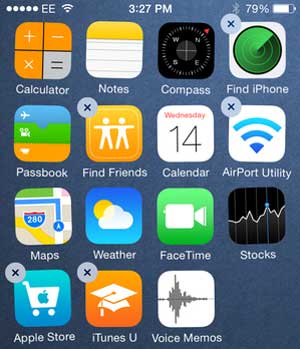
To avoid software issues on your iPhone, ensure the device is always up to date. This helps ensure that you have the latest security patches and bug fixes. It's always recommended to update your iPhone to the latest iOS version.
Here's how you can update an iPhone:
Step 1. To keep your device up-to-date, open "Settings" and head to the "General" section. Then select "Software Update" to begin the process of updating it.
Step 2. Your iPhone will begin scanning for new updates. If an update is available, download and install it on the device.
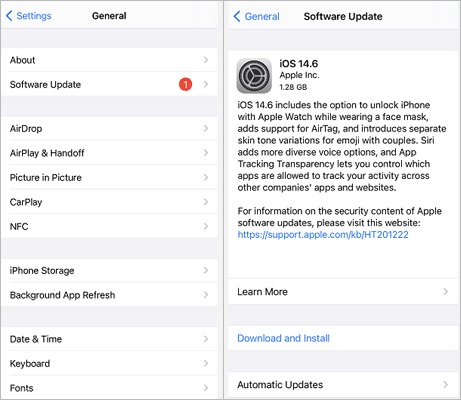
Although the iPhone's touchscreen appears sturdy and dependable, its performance is only guaranteed in a specific range of conditions. For instance, if you attach a too-thick protector to your device, the screen will no longer be able to sense electrical capacitance from fingertips and consequently cease functioning.
If the screen isn't working as it should, remove any item blocking it, such as a phone case or protector. After removing, clean the screen with a soft cloth. These can hinder your device from being fully functional. If the issue is solved after removing the screen accessories, consider purchasing a new case or finding a thin screen protector.
If you find that your iPhone touchscreen is only acting up while using one app in particular, the issue may be with this application. To resolve this issue, press the Home button to return to your home screen and head to the App Store. See if an update is available for the app that's causing problems.
If an update is available, be sure to install it right away. However, if no new version exists, you can uninstall the app from your iPhone and reinstall it afterward. Once complete, reopen the application and confirm that unresponsiveness has been resolved on your phone screen.
Struggling with an unresponsive touch screen on your iPhone? Before giving up, adjust the 3D Touch settings. To get started, just follow the steps below:
Step 1. To gain access to the settings on your iPhone, simply open up the Settings app.
Step 2. Now head to "General" and find "Accessibility" and "3D Touch." Then adjust the setting's sensitivity.
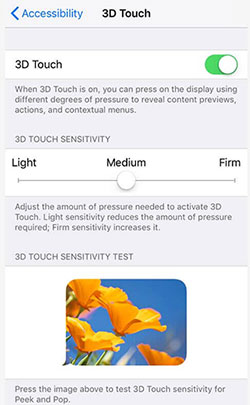
Another possible reason for an unresponsive iPhone touch screen is an overstuffed device. If this is the case, your phone may not be able to handle all the content you've been adding and will begin to malfunction. To ensure this does not happen, regularly delete apps or photos taking up space on your device. You can also use cloud storage to clear up some room on your phone. Once this is done, check if the touch screen is working better than before.
If your iPhone is unresponsive to your touch and all other solutions haven't been successful, it could be a significant hardware issue, and the device needs immediate repair or replacement.
Before you do that, it's prudent to try a factory reset. Your phone will essentially be returned to how it was when you first purchased it, erasing all software updates, installed applications, and personal data. This shouldn't be an issue if your phone is scheduled for regular cloud backups. However, it's important to remember that any data since the last backup could be lost forever if not backed up properly.
If the above solutions have not resolved your iPhone's unresponsive touchscreen, you are likely dealing with a more serious issue. Nevertheless, if you've read this far, chances are that the problem remains unsolved and requires professional attention.
When a device is dropped, the only surefire way to rectify any hardware issues, such as a cracked or internal damage, is through Apple Support. You will need to contact Apple Support for a repair. You can contact them via phone call, text message, or email. Plus, if the problem is more complicated and needs further assistance to be resolved properly, take it to their service center.
Is the iPhone touch screen not working after update? With iOS System Recovery, you can easily fix it! As a professional and easy-to-use tool, iOS System Recovery helps you to restore your iPhone from any iOS systems issue like being stuck on the Apple logo, recovery mode looping, black screen of death, and more. It will check the system status of your iPhone and offer you a customized solution to fix it. You can also repair iOS devices without data loss, including iPhone touch screen unresponsive to touch after an update.
Key Features of iOS System Recovery:
Here are the steps to fix iPhone touch screen not working properly via iOS System Recovery:
01To get started, download and launch the software on your computer. Select "iOS System Recovery" from the menu. Connect your iPhone to your device via a USB cable and trust this connection by tapping "Trust" on your phone's interface. Wait for the software to recognize it automatically.
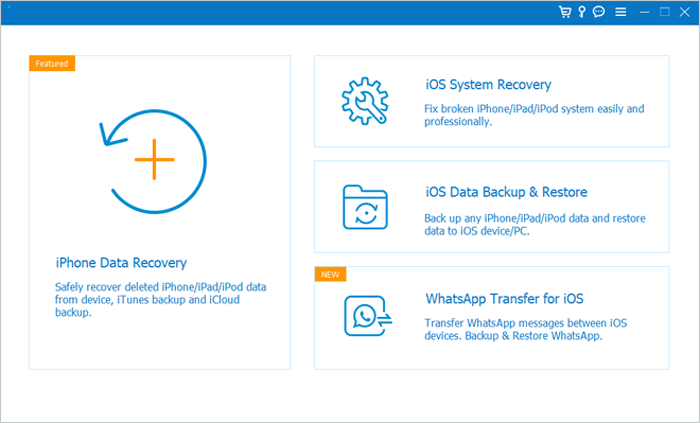
02Click the "Start" button to begin. Tap the "Fix" button to start fixing system issues.
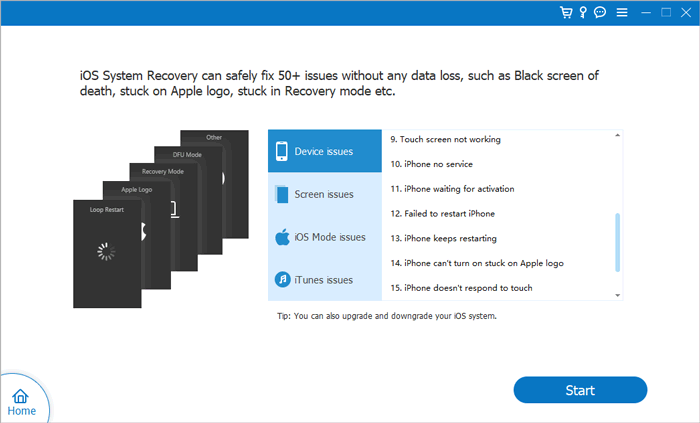
03On the next page, you can pick what mode best suits your needs to repair any touchscreen malfunction on an iPhone. Select "Standard Mode" and press "Confirm" to proceed.
04You will see your phone's info and versions supported. Choose the right info for your device and hit the "Next" tab to fix your device.
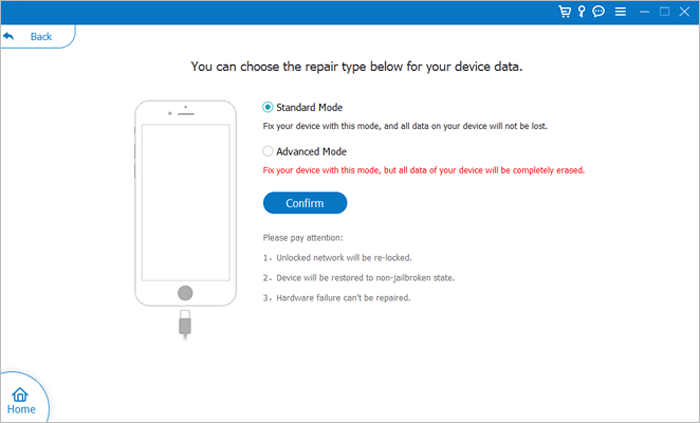
When your iPhone's screen doesn't touch, it can be a nuisance. Of course, hardware issues such as dropping your iPhone may cause this frustrating issue. Besides, software issues may also arise. But that doesn't mean your device will be useless. iOS System Recovery is a reliable tool that can help you fix your iPhone screen not responding to touch issues quickly and easily. So don't hesitate to try it! Hope this article can help you out.
Related Articles:
How to Fix iPhone/iPad Screenshot Not Working
How to Fix iPhone Grey Screen of Death By Yourself? (8 Solutions)
iCloud Backup Failed | iPhone Not Backing Up to iCloud (12 Fixes)